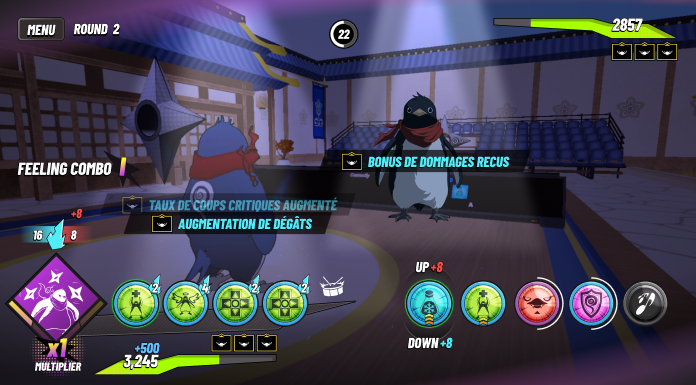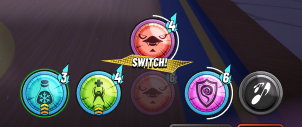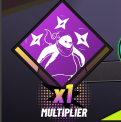Getting on Stage
Once your deck is built and your abilities are slotted, you jump into the arena and the bars start scrolling. You don’t need to know every rule to have fun—the music will guide you and it’s enough to try crafting a cool groove while you manage your resources. All the deeper systems are there for competitive players, but nothing blocks a casual run: play the skills you have, build a track, enjoy yourself.
Mastering the Game
To climb the ranked ladder you must learn four things
- Resource management – Hype and Flow
- Ability categories – Drums, Chords, Bass, Melody, Voices
- Musical combos – structured sample patterns
- Bar timing – staying in sync with the musical grid
1. The Three Core Resources
• Hype – your health; reach zero and you lose.
• Flow – your mana; spend it to fire abilities.
• Maestria – a special gauge filled by successful combos; it fuels your Super Attack (50 %) and Ultimate (100 %).
Some abilities cost Hype, others Flow, others a mix. Maestria is reserved for your signature moves.

2. Ability Timing and Slot Rules
The main timeline is a musical bar line that governs every action.
• An ability always lasts until the end of the current 4-bar block.
• It begins on the bar after you trigger it (play at bar 22 → active during bars 23-24).
• Its effect fires every bar while active.
• You can delete an ability, but the cost is never refunded; deletion and prepared switches resolve on the next bar.
Switching
You can switch an ability at any time for another in the same category:
– Fixed cost (20 % cheaper if that category is your character’s dominant family).
– Switch resolves on the next bar; you pay when it actually comes into play.

Intensity
Each ability has three intensity levels. You can raise or lower the level by one step before activation or during a switch. You cannot change intensity and switch in the same bar.
A slot may sit empty. When you assign an ability, it fires on the next bar and persists to block end. One slot = one ability, but you may queue a future switch or intensity change above it.

3. Building Combos
Landing a combo means following a musical pattern (for example A A B B or A B A B within a single bar block). Complex forms can stretch over two blocks for bigger rewards. You don’t have to memorise them all—pick a couple that feel natural and treat them like your personal chorus. Successful combos grant Maestria points; combos with active abilities also add a power multiplier.

4. Maestria Gauge & Signature Attacks
• Half-full gauge → Super Attack
• Full gauge → Ultimate (stronger)
After you fire a Super or an Ultimate, your Maestria points are spent and the power multiplier resets. Active-ability combos increase the multiplier; passive-ability combos refill Maestria itself. The system rewards smart deck composition and rhythmic execution.
5. Buffs & Debuffs – Winning the Head-to-Head
• Every buff or debuff has a stack counter.
• Using a skill that references that stat consumes one stack.
• Buffs and debuffs remain in play and can stack up (max 20 buffs, 10 debuffs).
• Buffing a debuffed stat removes a debuff stack, and vice-versa; a stat can never be both buffed and debuffed at the same time.
Maxed-out buffs can double a stat; maxed debuffs can cut it in half. Simple to read, brutal in impact.
Character Progression
Easy to learn, hard to master—all these systems mesh into a deep engine, so the challenge is sequencing them in gradually layered tutorials. Even with only Drums and Chords unlocked at the very start, players can already create satisfying music; Herd handles the harmony. We’ll introduce each new mechanic exactly when it matters, using clear progression gates tied directly to deck evolution.
Rarity tiers and star levels
• Common : level 1-10
• Uncommon : 1-20
• Rare : 1-30
• Epic : 1-40
• Legendary : 1-50
• Mythic : 1-60
At every threshold you modify your deck via the slot system. Mid-game usually begins when you earn your first Epic character—at that point Legendary skills unlock and every effect in the game becomes available.
Toward the Big Update
You now know every core mechanic of Herd. The current 0.44 build still runs the previous rule set; the Big Update will bring the full system online. We’re very close—final tweaks are coming fast.
Your turn
Jump in with the abilities you have, let the music carry you, and evolve from instinctive play to expert timing, intensity shifts and combo chains. That is the journey we designed, and the one the Big Update tutorials will guide you through. Enjoy the climb!

%20(1)%20(1)%20(1).png)




